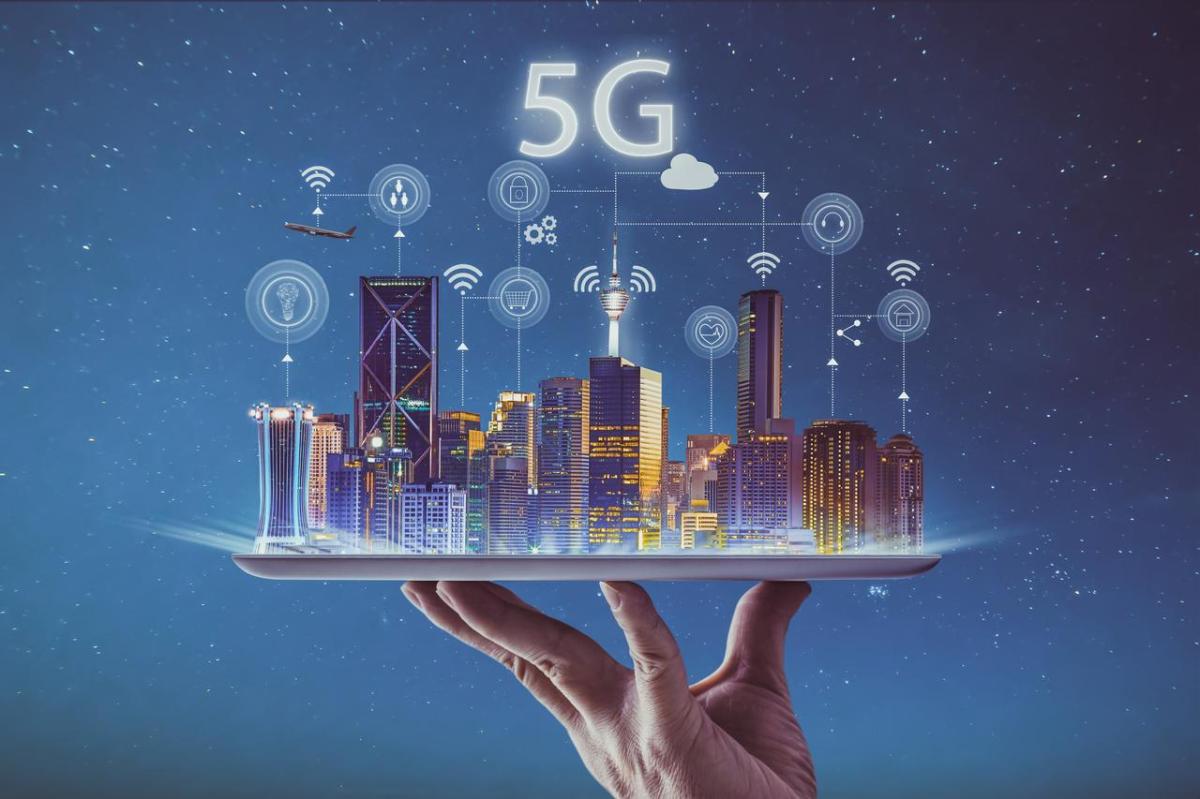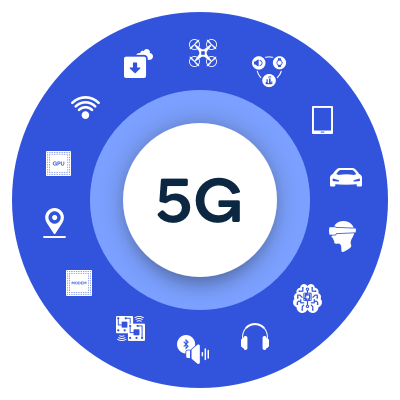5G technology is the fifth generation of mobile networks. It promises faster speeds, lower latency, and greater connectivity.
5G technology represents a significant leap forward in mobile communication. It offers download speeds up to 100 times faster than 4G. Lower latency means quicker response times, which is crucial for applications like autonomous vehicles and smart cities. Enhanced connectivity supports the growing number of Internet of Things (IoT) devices.
This technology will revolutionize various industries, from healthcare to entertainment. It enables real-time data transfer, remote surgery, and seamless virtual reality experiences. Businesses and consumers can expect more reliable and efficient network performance. With 5G, the potential for innovation and growth is immense.

Credit: www.telefonica.com
Key Features
5G technology is set to revolutionize the way we connect to the internet. Below are the key features that make 5G stand out.
High Speed
5G offers incredibly high speeds, up to 100 times faster than 4G. This means you can download movies in seconds. You can also stream high-quality video without buffering. The high speed enhances online gaming, providing a seamless experience.
Low Latency
One of the most important features of 5G is its low latency. Latency is the delay before data transfer begins. With 5G, this delay is almost eliminated. This is crucial for applications like remote surgery and autonomous driving. Low latency ensures real-time communication without any noticeable delay.
Massive Connectivity
5G supports a massive number of connected devices. This is essential for the Internet of Things (IoT) to flourish. You can connect multiple smart devices at home without any lag. Businesses can also benefit from connecting various sensors and machines. This feature allows for smarter cities, better healthcare, and more efficient industries.
| Feature | Benefit |
|---|---|
| High Speed | Faster downloads and streaming |
| Low Latency | Real-time applications |
| Massive Connectivity | More connected devices |
- High speed: Up to 100 times faster than 4G
- Low latency: Almost no delay
- Massive connectivity: Supports many devices
Impact On Industries
5G technology is transforming industries. It offers faster speeds and better connectivity. This change affects various sectors significantly. Let’s explore how 5G impacts healthcare, automotive, and manufacturing industries.
Healthcare
5G technology revolutionizes healthcare. It enables remote surgeries and real-time monitoring. Doctors can perform surgeries from different locations. This technology also supports telemedicine, allowing doctors to diagnose patients remotely.
Wearable devices can monitor patients’ health in real-time. These devices send data directly to doctors. This ensures quicker and more accurate treatments.
- Remote surgeries
- Telemedicine
- Wearable health devices
Automotive
The automotive industry benefits greatly from 5G technology. It enhances vehicle-to-vehicle communication. This leads to safer and more efficient traffic management.
Self-driving cars rely on 5G for faster data processing. This ensures quick reactions to road conditions and obstacles.
| Benefits | Details |
|---|---|
| Vehicle-to-Vehicle Communication | Improves safety and traffic management |
| Self-Driving Cars | Enables faster data processing |
Manufacturing
5G technology enhances manufacturing processes. Factories can use smart robots for better efficiency. These robots communicate in real-time, reducing errors and downtime.
5G also supports predictive maintenance. Machines can alert staff before a breakdown occurs. This helps in maintaining continuous production.
- Smart robots
- Predictive maintenance
- Reduced errors and downtime
5g And Iot
The advent of 5G technology is revolutionizing the Internet of Things (IoT). With faster speeds and lower latency, 5G enables seamless connectivity. This new level of connectivity impacts various IoT applications, transforming everyday life. Below, we explore how 5G influences smart homes and wearable devices.
Smart Homes
Smart homes are becoming more advanced with 5G technology. Devices like smart thermostats, security cameras, and lighting systems connect faster. This enhances user experience and makes homes more efficient.
- Real-time monitoring: 5G allows for instant updates from smart devices.
- Energy efficiency: Smart systems adjust settings to save energy.
- Enhanced security: Faster response times improve home security systems.
Imagine controlling every aspect of your home from your phone. 5G makes this possible with minimal delay. This creates a more convenient and secure living environment.
Wearable Devices
Wearable devices like smartwatches and fitness trackers benefit greatly from 5G technology. They can sync data almost instantly, providing real-time health metrics.
- Instant notifications: Receive messages and alerts without delay.
- Real-time health data: Monitor heart rate, steps, and more in real-time.
- Improved connectivity: Seamless connection with other smart devices.
Wearables become more effective with 5G. Tracking your health and staying connected has never been easier. The rapid data exchange ensures you stay informed at all times.

Credit: www.govtech.com
Challenges And Concerns
5G technology promises faster speeds and better connectivity. But, it also brings challenges and concerns. These issues need careful consideration to ensure a smooth transition to 5G.
Security Risks
With 5G, more devices will connect to the internet. This increases potential entry points for cyber-attacks. Hackers could target smart homes, businesses, and even critical infrastructure. Keeping these devices secure is crucial.
Another issue is data privacy. 5G networks will handle vast amounts of data. Protecting this data from unauthorized access is important. Encryption and robust security protocols are necessary.
Infrastructure Costs
Building a 5G network requires significant investment. Telecom companies need to upgrade existing infrastructure. They must install many small cell towers to ensure coverage.
The cost of these upgrades can be high. This could lead to higher service costs for consumers. Rural areas might face delays in getting 5G due to these costs.
Consider the following table for a brief overview of the costs involved:
| Cost Component | Description |
|---|---|
| Small Cell Towers | Many small towers needed for dense 5G coverage |
| Fiber Optic Cables | High-speed cables required for data transmission |
| Network Upgrades | Updating existing infrastructure to support 5G |
These costs highlight the financial challenges of implementing 5G technology. Addressing these challenges is key to unlocking the benefits of 5G.
Global Deployment
The world is rapidly adopting 5G technology. This new network promises faster speeds and better connectivity. Many countries are racing to deploy 5G. Let’s explore which countries are leading and their strategies.
Leading Countries
Several countries are at the forefront of 5G deployment. Here are some of the leaders:
- United States: Major cities have 5G coverage.
- South Korea: One of the first to launch 5G nationwide.
- China: Rapid expansion with many cities covered.
- United Kingdom: Significant coverage in urban areas.
- Germany: Continues to expand its 5G network.
Deployment Strategies
Different countries use various strategies to deploy 5G networks. Here are some common approaches:
| Country | Strategy |
|---|---|
| United States | Partnerships with tech companies and city governments. |
| South Korea | Government support and private sector investment. |
| China | State-driven initiatives and large-scale infrastructure projects. |
| United Kingdom | Private telecom investments and local government incentives. |
| Germany | Combination of government grants and telecom investments. |
These strategies help countries achieve widespread 5G coverage. The impact is tremendous. Faster internet speeds and better connectivity improve many aspects of life.

Credit: www.thefastmode.com
Future Prospects
The future of 5G technology holds immense potential. It promises to revolutionize various sectors. From healthcare to entertainment, its impact will be profound. Let’s explore the future prospects of 5G technology.
6g Potential
While 5G is still rolling out, experts are eyeing 6G potential. 6G is expected to be 100 times faster than 5G. Imagine downloading a full movie in seconds. The future of connectivity seems limitless. Researchers are working on advanced technologies. These include terahertz waves and AI-driven networks. The goal is to achieve ultra-low latency and high reliability.
A table can illustrate the key differences:
| Feature | 5G | 6G |
|---|---|---|
| Speed | Up to 10 Gbps | Up to 1 Tbps |
| Latency | 1 ms | Less than 1 ms |
| Frequency | Up to 100 GHz | Up to 3 THz |
Emerging Applications
With 5G, new applications are emerging rapidly. These applications span various fields:
- Healthcare: Remote surgeries and real-time patient monitoring.
- Automotive: Self-driving cars and smart traffic management.
- Entertainment: Augmented reality (AR) and virtual reality (VR) experiences.
- Industry: Smart factories and automated logistics.
Let’s look at a few examples in detail:
- Remote Surgeries: Doctors can operate from miles away with precision.
- Self-Driving Cars: Vehicles will communicate with each other for safety.
- AR and VR: Enhanced gaming and virtual experiences for users.
- Smart Factories: Machines will optimize production lines autonomously.
5G technology is paving the way for a connected world. Its future prospects are exciting and boundless. Stay tuned as we journey into this new era.
Frequently Asked Questions
What Is The Technology Of 5g?
5G technology is the fifth generation of mobile networks. It offers faster speeds, lower latency, and increased connectivity. This technology supports advanced applications like IoT, smart cities, and autonomous vehicles. 5G networks use higher frequency bands and advanced antenna technology to deliver superior performance.
What Are The Disadvantages Of 5g?
5G has limited coverage and requires more towers. It can be expensive to implement and faces potential security concerns. High-frequency signals have shorter range and may struggle with obstacles. Some health concerns remain unverified.
What Is 5g In Simple Terms?
5G is the fifth generation of mobile network technology. It offers faster speeds, lower latency, and improved connectivity.
What Is The Difference Between 4g And 5g?
4G offers faster speeds than 3G, while 5G provides even higher speeds, lower latency, and greater connectivity. 5G supports more devices simultaneously, making it ideal for smart cities and IoT applications.
Conclusion
5G technology is set to revolutionize our digital experiences. It offers faster speeds and more reliable connections. Industries will greatly benefit from improved communication. Consumers can expect enhanced mobile experiences. Embracing 5G will pave the way for future innovations. Stay updated to leverage its full potential.

